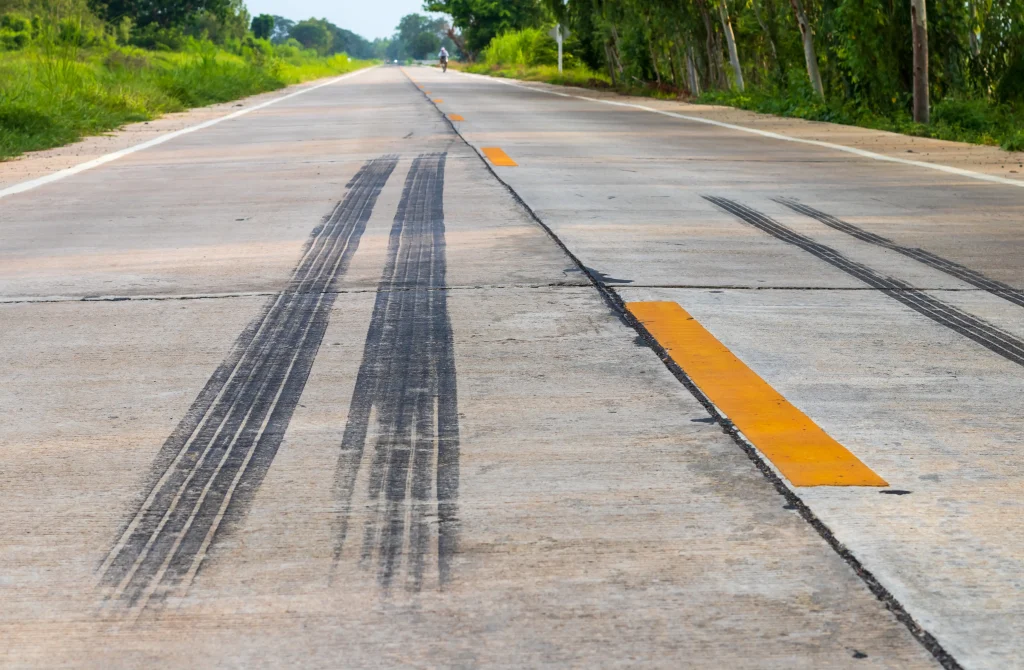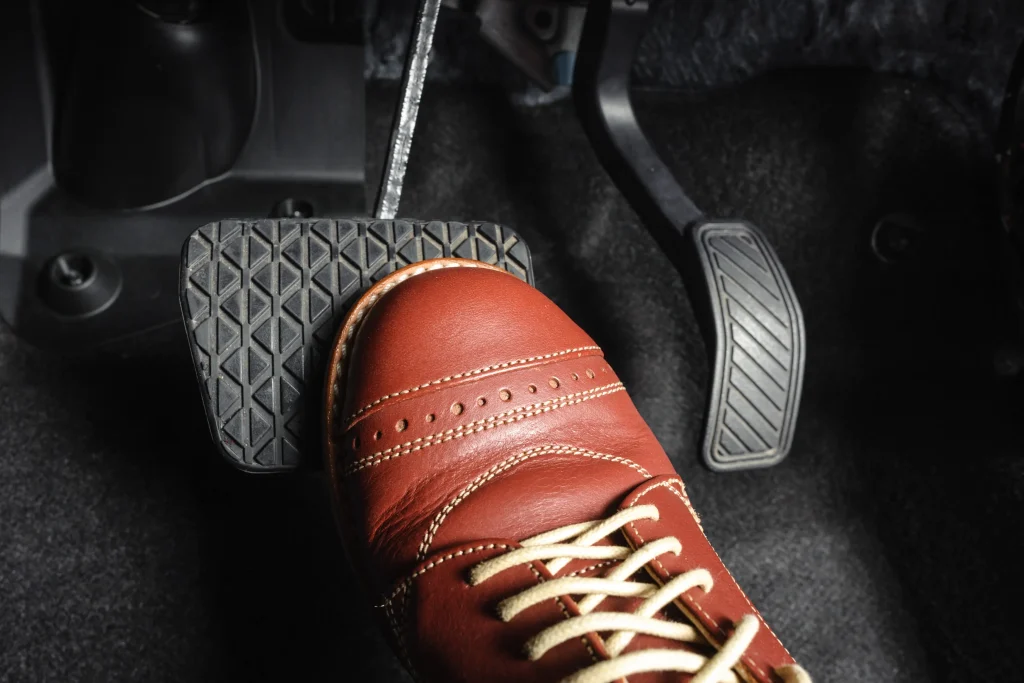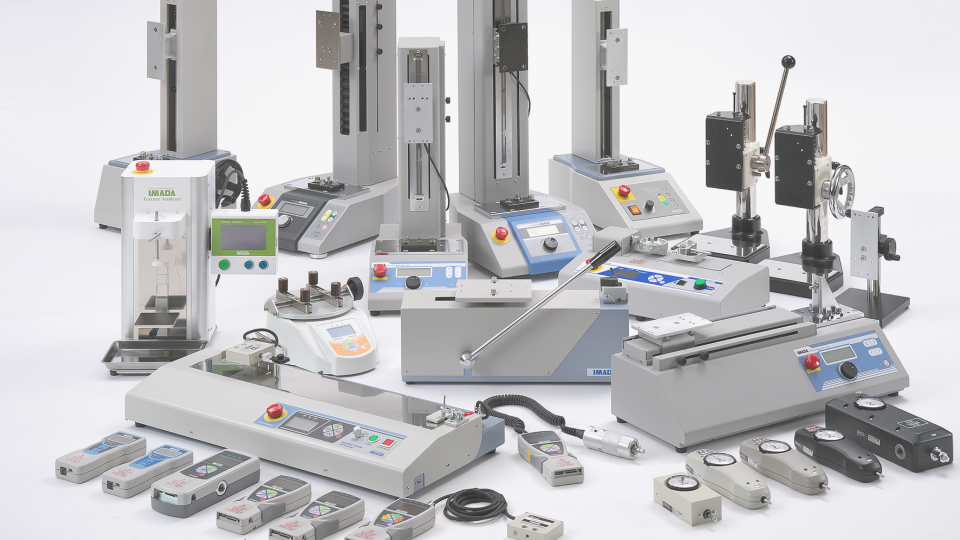Table of Contents
- Braking Under Pressure
- Elderly Drivers: Finding the Right Balance
- The Brake Force Challenge: Any idea how much is applied?
- Brake Safely, Accelerate Safety

Braking Under Pressure
At IMADA, we receive inquiries about various kinds of force measurement on a daily basis. In this issue, we are sharing one of them; brake pedal force test, especially in scope of elderly drivers. Some of you must step on the brake pedal of a car every day. Now, how much force do you think it takes to press down on that brake pedal?

Elderly Drivers: Finding the Right Balance
In recent years, traffic accidents caused by the elderly and the resulting license surrender system have become social issues. While the number of traffic fatalities in Japan is declining overall, the number of traffic fatalities among people aged 75 and older is stagnating, so the proportion of fatalities among the elderly is increasing. The most common cause of these accidents is difficulty in operating the vehicle, accounting for more than 30%. For example, accidents caused by mistaking the brake pedal for the accelerator pedal, which are often reported in the news.
In response to such accidents, the issue of the voluntary return of driver’s licenses is attracting attention at the same time as the topic of car safety features and preventative devices that can be retrofitted. It is often said that a car can be a deadly weapon, but it also plays a very important role as a tool to promote independence and self-reliance for the elderly. It is a difficult issue that requires a multifaceted approach, with regional differences in convenience being one example.
The Brake Force Challenge: Any idea how much is applied?
It was the Japan Drivers with Disabilities Support Organization that contacted us to find out about brake pedal force test. This organization aims to promote self-reliance and independent living by supporting the safe driving of sick, disabled, and elderly drivers. It is involved in various activities, including the Driver Rehabilitation Forum, an educational program to train medical professionals, driving instructors and administrators in driving assistance.
This time, a car brake pedal force test was conducted for the training course as an opportunity to consider the difficulty of applying emergency braking with sufficient force, the physical abilities required for this action, and the movement and cognitive functions.
In this measurement study, the force was measured by stepping on a dedicated sensor installed on the car brake pedal of the car.

Installation image – IMADA’s PK2-1500N load cell dedicated to vehicle foot brake force (bottom left) and indicator
The tests conducted this time were:
(i) Force applied when emergency braking is applied from normal driving conditions
(ii) Force applied when operating the brake alone
The results from over 50 subjects in their 30’s to 70’s are as follows:
(i) Maximum 1312N, average 642N, minimum 178N
(ii) Maximum 1601N, average 849N, minimum 307N
Thus, even a comparison of the average values showed a difference of about 200N. The result was that many of the subjects thought they were braking hard enough, but were not doing so with maximum force.
Additionally, in the measurement of different pedal operation methods, the force was greater when the foot itself was lifted and stepped on than when the foot was stepped on with the heel on the floor.
(From the tests conducted by the Japan Drivers with Disabilities Support Organization)
Stopping a moving vehicle requires a great deal of force. Considering its weight and speed, it is a wonder that it can be stopped simply by stepping on the pedal with the foot. The braking mechanisms that make this possible are ingenious and utilize several principles. If the force applied to the brake is not strong enough, the braking system does not work properly, resulting in a longer stopping distance. In addition, brake assist functions such as ABS may not perform as well as they should, leading to a reduction in safety. Thus, it is a very important force to avoild accidents.
Brake safely, Accelerate Safety
Currently, drivers 75 years of age and older must undergo a cognitive function test, etc. when renewing a license at a driver’s license center (similar to DMV). Depending on the results, a doctor’s diagnosis may be required and the licence may eventually be suspended or revoked. In some cases, elderly drivers themselves seek a medical advice, and the use of brake force testing in such situations is likely to increase in the future.
In essence, the request we received this time gave us the opportunity to learn that force measurement can help protect safety. The force of an accidental collision depends on the speed and weight of the vehicle, but the result of the brakes that prevent it also depends on the force with which they are applied.
Force is everywhere in our lives.
IMADA hopes to be a force that can change our lives and the manufacturing processes involved for the better.

Last but not least, we would like to express our gratitude to the Japan Drivers with Disabilities Support Organization for kindly agreeing to provide information in this article.
Japan Drivers with Disabilities Support Organization http://www.hcd-japan.com/
The following is IMADA application introduction video for your reference.
*This video presents the similar test method, but is not the actual test performed as explained in this article.
Foot Brakes Pedal Stepping Force Test | IMADA specializes in force measurement (forcegauge.net)
References
National Police Agency Traffic Bureau, “The situation of traffic accidents in the year 2021”, March 2022
https://www.npa.go.jp/bureau/traffic/bunseki/nenkan/040303R03nenkan.pdf
Cabinet Office of Japan, Special Feature: “Emergency Measures for Traffic Safety of Preschool Children and Elderly Drivers”
https://www8.cao.go.jp/koutu/taisaku/r02kou_haku/zenbun/genkyo/feature/feature_01_3.html
Japan Automobile Manufacturers Association, Inc. Elderly Drivers and Automobile Driving – Technical Approaches from the Automotive Industry
https://www.npa.go.jp/koutsuu/kikaku/koureiunten/menkyoseido-bunkakai/2/kakushu-shiryou/0006.pdf
Toyota Commemorative Museum Industry and Technology, So-So: Museum Bulletin, vol.28, October 2002
https://www.tcmit.org/wp-content/uploads/vol.28.pdf
National Police Agency, About Cognitive Function Examination
https://www.npa.go.jp/policies/application/license_renewal/ninchi.html
Japan Automobile Federation (JAF), “How to prevent pedal misapplication in a car?”
https://jaf.or.jp/common/kuruma-qa/category-trouble/subcategory-prevention/faq119





